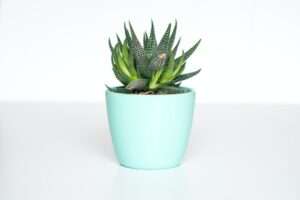Cactus plants are a unique and fascinating group of plants known for their ability to survive in harsh and arid environments. With over 2,000 species, cacti come in a wide variety of shapes, sizes, and colors, making them a popular choice for both indoor and outdoor gardens. In this article, we will explore the evolution, distribution, anatomy, diversity, uses, threats, and conservation efforts of cactus species. We will also highlight some famous cactus species and provide tips for growing and caring for these plants at home.
The Evolution of Cactus Species
Cactus plants have a long and interesting evolutionary history. They are believed to have originated in the Americas, with the earliest known cactus fossils dating back over 30 million years. Cacti evolved to survive in arid environments by developing unique adaptations such as succulent stems, which store water during periods of drought. They also have specialized root systems that allow them to absorb water efficiently from the soil.
One of the most remarkable adaptations of cacti is their ability to perform photosynthesis at night. Unlike most plants that open their stomata during the day to take in carbon dioxide and release oxygen, cacti keep their stomata closed during the day to prevent water loss through transpiration. Instead, they open their stomata at night when temperatures are cooler and humidity is higher, allowing them to take in carbon dioxide while minimizing water loss.
The Distribution of Cactus Species Around the World
Cactus species can be found in various regions around the world, with the majority being native to the Americas. They are particularly abundant in desert regions such as the southwestern United States, Mexico, and parts of South America. However, cacti can also be found in other habitats such as tropical rainforests and high-altitude mountains.
Each cactus species has its own unique adaptations to its specific environment. For example, the saguaro cactus, which is native to the Sonoran Desert in Arizona and Mexico, has a tall and columnar shape that allows it to reach for sunlight in the crowded desert landscape. On the other hand, the prickly pear cactus, which is found in various regions across the Americas, has a low and spreading form that helps it to survive in rocky and sandy soils.
The Anatomy of Cactus Plants
Cactus plants have several physical features that contribute to their survival in arid environments. One of the most notable features is their succulent stems, which are thick and fleshy and store water for long periods of time. These stems are covered in a waxy layer called a cuticle, which helps to prevent water loss through evaporation.
Cacti also have specialized root systems that allow them to absorb water efficiently from the soil. Some cacti have shallow roots that spread out horizontally near the surface, while others have deep taproots that reach down into the ground to access water sources deep underground.
Another unique feature of cactus plants is their spines. These spines serve multiple purposes, including protection against herbivores and providing shade to the plant’s surface. Some cacti also have glochids, which are tiny barbed spines that can easily detach from the plant and cause irritation if touched.
The Diversity of Cactus Flowers
Cactus flowers are known for their vibrant colors and unique shapes. They come in a wide range of colors including red, pink, yellow, orange, and white. Some cactus flowers are large and showy, while others are small and inconspicuous.
Cactus flowers have evolved various pollination methods to ensure their reproduction. Some cacti rely on bees and other insects for pollination, while others are pollinated by birds or bats. The flowers of certain cacti only open at night to attract nocturnal pollinators, while others open during the day to attract diurnal pollinators.
One of the most famous cactus flowers is the night-blooming cereus, which only opens for one night each year. This flower is known for its intoxicating fragrance and large size, making it a popular attraction for nature enthusiasts.
The Different Shapes and Sizes of Cactus Plants

Cactus plants come in a wide variety of shapes and sizes, ranging from tall and columnar to short and round. Some cacti, such as the saguaro cactus, can grow up to 40 feet tall, while others, like the ball cactus, are only a few inches in height.
The shape of a cactus plant is often determined by its environment. Tall and columnar cacti are typically found in desert regions where they need to reach for sunlight in order to survive. Short and round cacti, on the other hand, are often found in rocky or sandy soils where they need to conserve water and protect themselves from strong winds.
The Uses of Cactus Species in Medicine and Food
Cactus plants have been used for centuries by indigenous cultures for their medicinal and culinary properties. The prickly pear cactus, for example, has been used in traditional medicine to treat various ailments such as wounds, burns, and digestive disorders. It is also a popular ingredient in Mexican cuisine, where its pads (known as nopales) are cooked and eaten as a vegetable.
Another cactus species with medicinal properties is the peyote cactus. This cactus contains a psychoactive compound called mescaline, which has been used by indigenous cultures for spiritual and healing purposes. However, it is important to note that the use of peyote is highly regulated due to its potential for abuse.
The Threats to Cactus Species and Conservation Efforts
Cactus species are facing numerous threats, including habitat loss, climate change, and illegal collection for the horticultural trade. Many cacti are also at risk of extinction due to their slow growth rates and low reproductive rates.
To protect cactus species, conservation efforts are being made around the world. These efforts include the establishment of protected areas, the implementation of sustainable harvesting practices, and the propagation of cacti in botanical gardens and nurseries. Additionally, education and awareness campaigns are being conducted to promote the importance of conserving these unique plants.
Famous Cactus Species and their Unique Characteristics
There are several famous cactus species that are known for their unique characteristics. One example is the giant saguaro cactus, which is native to the Sonoran Desert in Arizona and Mexico. This cactus can live for over 150 years and can reach heights of up to 40 feet. It is also a keystone species in its ecosystem, providing shelter and food for a variety of animals.
Another famous cactus species is the barrel cactus, which is known for its barrel-shaped body and bright yellow flowers. This cactus is native to the southwestern United States and Mexico and can survive in extremely dry conditions.
Growing and Caring for Cactus Plants at Home
Cactus plants are popular choices for indoor and outdoor gardens due to their unique appearance and low maintenance requirements. To grow and care for cactus plants at home, it is important to provide them with well-draining soil, as they are susceptible to root rot if overwatered. They also require bright sunlight, so it is best to place them near a south-facing window or outdoors in a sunny spot.
When it comes to watering, it is important to strike a balance between underwatering and overwatering. Cacti should be watered thoroughly but infrequently, allowing the soil to dry out between waterings. During the winter months, cacti enter a period of dormancy and require less water.
Cactus plants are truly remarkable organisms that have evolved to survive in some of the harshest environments on Earth. Their unique adaptations, diverse flowers, and wide variety of shapes and sizes make them a fascinating group of plants to study and appreciate. It is important to recognize the threats facing cactus species and to support conservation efforts to protect these valuable plants for future generations. By growing and caring for cactus plants at home, we can also play a role in preserving their beauty and ensuring their survival.
If you’re fascinated by the world of cactus species and their incredible variety, you’ll love this related article on GirlsGist.com. “Unleashing the Beauty of Donkey Tail Succulent: A Guide to Growing and Caring for This Unique Plant” explores the unique characteristics and care requirements of the donkey tail succulent. Whether you’re a seasoned succulent enthusiast or just starting your collection, this article provides valuable insights and tips for successfully growing and maintaining this stunning plant. Check it out here!
FAQs
What are cactus species?
Cactus species are a type of plant that belong to the family Cactaceae. They are known for their unique appearance, which includes thick, fleshy stems and spines instead of leaves.
How many cactus species are there?
There are over 2,000 species of cactus that have been identified around the world.
Where are cactus species found?
Cactus species are found in a variety of habitats, including deserts, grasslands, and forests. They are most commonly found in North and South America, but can also be found in Africa, Europe, and Asia.
What are some common types of cactus species?
Some common types of cactus species include the saguaro cactus, prickly pear cactus, barrel cactus, and cholla cactus.
What are some unique features of cactus species?
Cactus species are known for their ability to store water in their thick stems, which allows them to survive in arid environments. They also have spines instead of leaves, which helps to protect them from predators.
How are cactus species used by humans?
Cactus species have a variety of uses for humans, including as a source of food, medicine, and building materials. Some species are also used for ornamental purposes.

















Add Comment